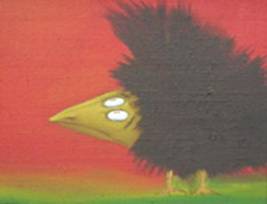The posthumous marriage mentioned in the thirteenth chapter was fairly common in China. It occurred most often in the case of chih-fu, or the marriage of-unborn children. Two friends would decide that their children would eventually marry each other. Frequently, if one of the two children died before having reached marriageable age, it was married to the surviving partner posthumously. In case of the bridegroom surviving this was a mere matter of form. The polygamic system allowed him to marry one or more other wives, but in the family register the dead child-bride remained recorded as the one and only First Wife.
In the present novel the Buddhist clergy is placed in a very unfavourable light. In this respect also I followed Chinese tradition. The writers of ancient novels were mostly members of the literary class who as orthodox Confucianists had a prejudice against Buddhism. In many ancient Chinese crime stories the villain is a Buddhist monk.
I also adopted the Chinese custom of beginning a crime novel with a brief introductory story where the main events of the novel itself are alluded to in veiled terms. And I also retained the Chinese-style chapter headings in two parallel sentences.
The plot of the 'Rape Murder in Half Moon Street' is derived from one of the most famous cases ascribed to Pao-kung, 'Judge Pao' (full name Pao Ch'eng), a well-known statesman who lived during the Sung period; he was born in 999 and died in 1062. Much later, during the Ming dynasty, cases allegedly solved by him were written up by an anonymous author in a collection of crime stories called Lung-t'u-kung-an, or in other editions, Pao-kung-an. The case utilised in the present novel is called in the original O-mi-t'o-fo-chiang-ho. This brief story gives but a bare outline, while the way in which the magistrate discovers the truth is not very satisfactory. He makes the criminal confess by letting his agents act the part of ghosts of the underworld, a popular motive in Chinese detective novels. I preferred to substitute a more logical solution, giving 'Judge Dee' some scope for exercising his deductive talent.
'The Secret of the Buddhist Temple ' is based on a story entitled Wang-ta-yin huo-fen Pao-lien-ssu, 'Magistrate Wang burns the Pao-lien Temple.' This is the thirty-ninth tale in a seventeenth-century collection of crime and mystery stories, published under the title of Hsing-shih-heng-yen, 'Constant Words for Rousing the World.' This collection was compiled by the Ming scholar Feng Meng-lung (died 1646); he was a prolific writer who in addition to two similar collections published also a number of plays, novels and scholarly treatises. I retained all main features of the plot, including the introduction of the two prostitutes. The original, however, ends with the magistrate burning down the monastery and summarily executing the monks, an arbitrary procedure that is not allowed under the ancient Chinese Penal Code. I substituted a more complicated solution, utilising the attempts of the Buddhist church to dominate the government, which during the T'ang dynasty at one time constituted quite a problem. It is not inapposite to let 'Judge Dee' play the leading role in this story. It is an historic fact that at one time in his career he had a large number of temples where evil practices prevailed destroyed.
The essence of the 'Case of the Skeleton under the Bell ' was suggested by the famous old Chinese crime novel Chiu-tning-ch'i-yuan, 'The Strange Feud of the Nine Murders.' This novel is based on a ninefold murder which actually took place in Canton, round the year 1725. In the original the case is solved in the regular way in court. I gave it a more sensational ending, borrowing the motif of the bronze temple bell, which occurs at least once in every collection of crime and mystery stories of the Ming and Ch'ing periods
The flogging of the mats utilised in the twenty-fourth chapter was suggested by the following story: 'When Li Hui of the Later Wei Dynasty (a.d. 386-534) served as Prefect of Yung-chou, a salt carrier and a wood carrier quarrelled about a lamb-skin, each claiming it as the very one he used to wear on his back. Li Hui ordered one of his officers: "Question this skin under torture, then you will know its owner." All the officers were dumbfounded. Li Hui had the lambskin placed on a mat, and had it beaten with a stick; then grains of salt came out of it. He showed them to the contestants, and the wood carrier confessed' (c.f. R. H. van Gulik, T'ang-yin-pi-shih, 'Parallel Cases from under the Pear-tree,' a thirteenth-century manual of Jurisprudence and Detection, Sinica Leidensia, Vol. X, Leiden, 1956). I thought that a more or less detailed account of the feud between the two families as given in the thirteenth chapter of the present novel would be of some interest to the Western reader. The Chinese are by nature a very forbearing people, most controversies are settled out of court by compromise. On occasion, however, virulent feuds will arise between families, clans or other groups, and then these are carried on relentlessly till their bitter end. The case Liang versus Lin is a good example of such a feud. Similar instances sometimes occurred among Chinese immigrant communities abroad. I mention the 'tong wars' in the United States, and the internecine fights of the 'Kongsi's' or Chinese secret societies in the former Netherlands East Indies in the end of the nineteenth, and the early years of the twentieth century.
R. H. v. G.
